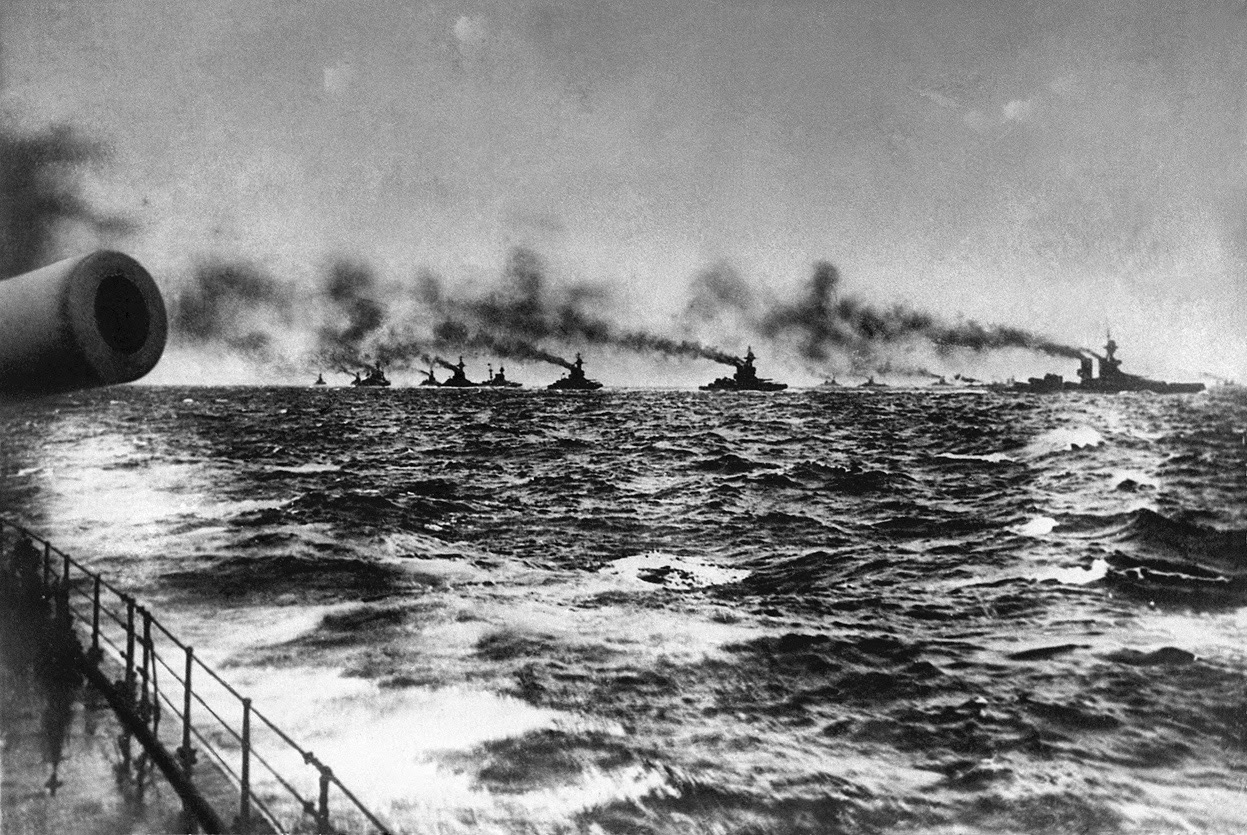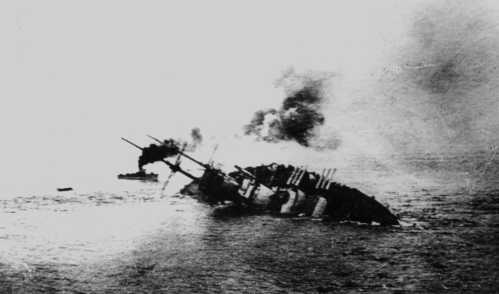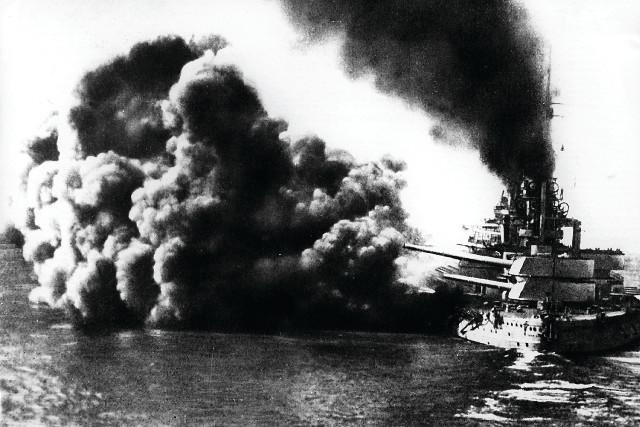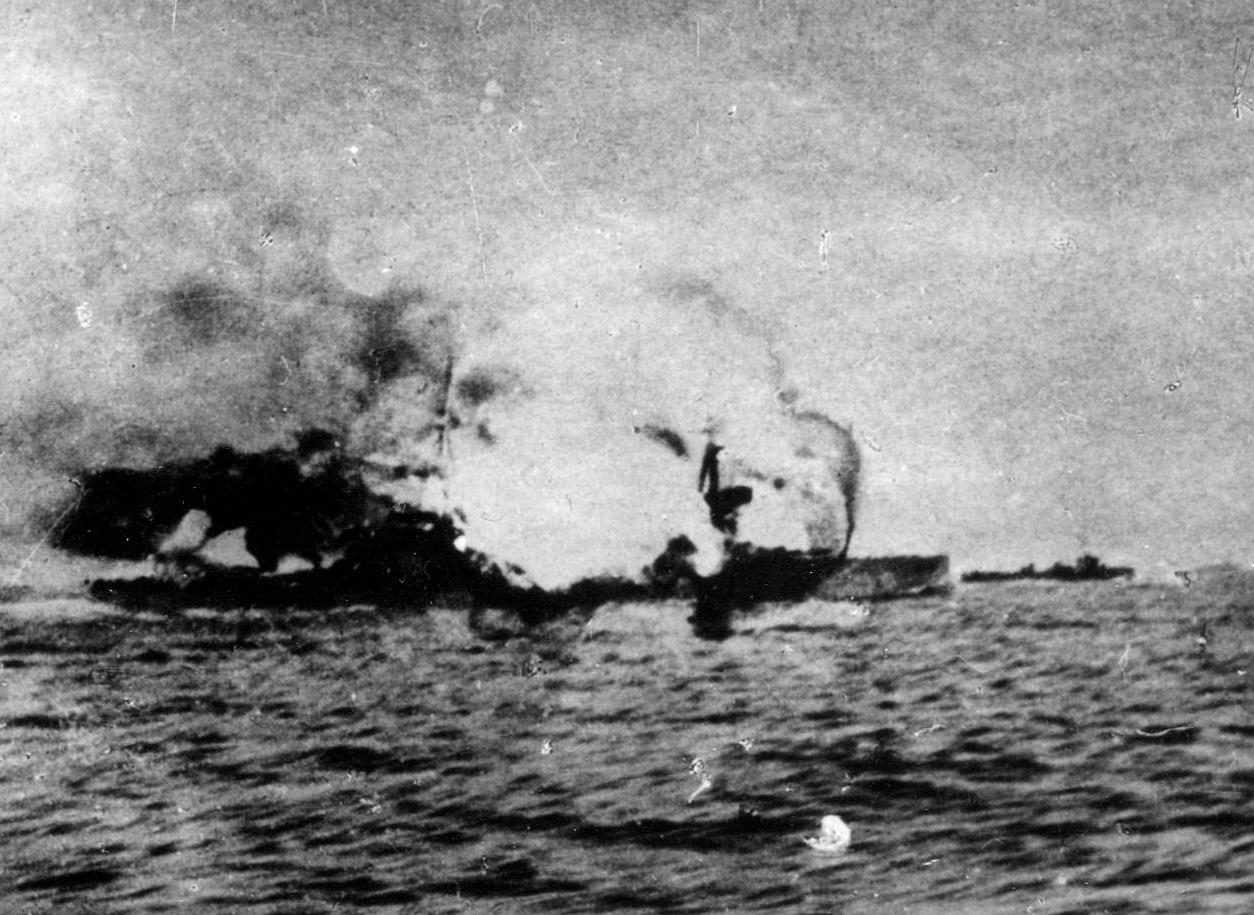The Battle of Jutland Lasts Few Short Hours,
Thousands of Sailors Drown
Special to The Great War Project
(30 May-1 June) On the morning of 31 May a century ago, the great flotillas of Britain and German warships are on a collision course.
“Over 250 British and German warships were steaming on convergent courses to a rendezvous,” reports war historian John Keegan. “Among the host of light cruisers, destroyers and submarines which made up the bulk of each side’s forces, it was the presence of the big ships which promised decision.”

British Grand Fleet on its way to meet the German High Seas Fleet at Jutland.
The likely location of collision is off the Danish coast of Jutland.
The big ships – the great battleships of both sides – are headed for an unexpected collision. On the British side, that means 28 Dreadnoughts, the greatest warships currently at sea, as well as five battlecruisers.
As for the Germans, they throw their entire High Seas Fleet into the North Sea, “something never ventured before,” observes Keegan. That includes sixteen Dreadnoughts, six battle pre-Dreadnoughts and five battlecruisers, and two dozen smaller warships.
The British have the clear advantage.
The German strategy is based on a belief that the British fleet will not know the whereabouts of the German fleet. But the British crack the German signals and codes and are able to track German naval movements.
The British Grand Fleet numbers nearly one hundred warships.
The encounter is shaping up to be the largest naval battle of the war, perhaps the largest in history. Reports Keegan, “No sea had ever seen such a large concentration of ships, so large, so fast, and so heavily armored.”
It will be called the Battle of Jutland.

Sinking ship at Battle of Jutland.
The German fleet is looking to attack Allied shipping with the hope of breaking the British blockade of Germany.
The next day, June 1st a century ago, the British battle fleet is bearing down on the Germans, reports historian Martin Gilbert. “The first engagement began short before four o’clock,” when the British and German ships “came within sight of each other.”

British ship at the Battle of Jutland.
The initial clash went badly for the British. Within two hours, “the British battleship Indefatigable was sunk, and 1017 men drowned. Then the battleship Queen Mary was blown up and 1,266 men killed.”
Then, reports Gilbert, a second engagement begins. This time it goes very badly for the Germans.
The German flagship, the battle cruiser Lutzow, is disabled by 24 direct hits, reports Gilbert. Still the British battleship Invincible is sunk with a great loss of life – more than 2000 British sailors killed.

The British ship Invincible takes a direct hit.
At this moment, the German fleet reverses course and heads for base. The battle lasts only a few hours.
“For the Germans,” writes Gilbert, “despite having fewer losses than the British, the Battle of Jutland was a mauling.” Never again do the Germans risk a major naval encounter.
But the battle is a blow for the British as well. Writes Gilbert, “Britain had hoped in any such major naval engagement to use its superiority in numbers to break the power of the German fleet.”
Nearly 6100 British sailors are dead. On the German side, more than 2500.
The writer Vera Brittain poses the question many British are asking…
“Were we celebrating a glorious naval victory or lamenting an ignominious defeat?”
“We hardly knew. Each fresh edition of the newspapers obscured rather than illuminated this really quite important distinction.”
“The one indisputable fact was that hundreds of young men, many of them midshipmen only just in their teens, had gone down without hope of rescue or understanding of the issues to a cold, anonymous grave.”

The photo of the sinking ship at the Battle of Jutland is actually the Austro-Hungarian dreadnought SMS Szent Istvan. No German or British dreadnoughts (battleships) present at Jutland had three gun barrels in a single turret. The Szent Istvan was torpedoed off the coast of Pula, Croatia (formally Pola, Austria-Hungary) on June 10, 1918. It was torpedoed by a Italian MAS (Torpedo armed motorboat). There is a famous film clip of this ship capsizing that was taken by a crew member of another nearby Austro-Hungarian ship. The photo is a still image from that film footage.